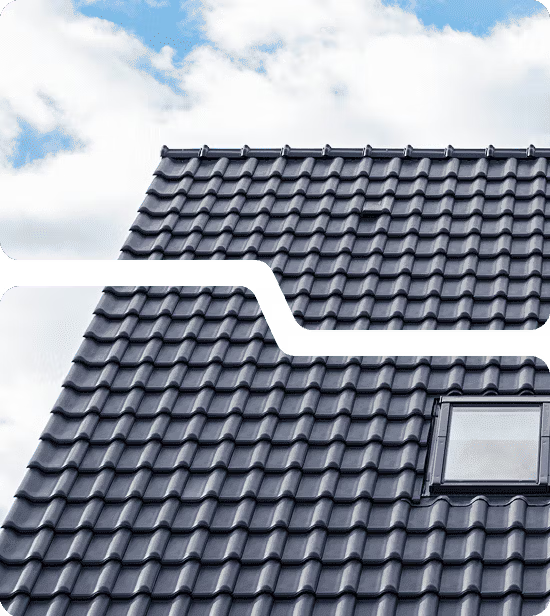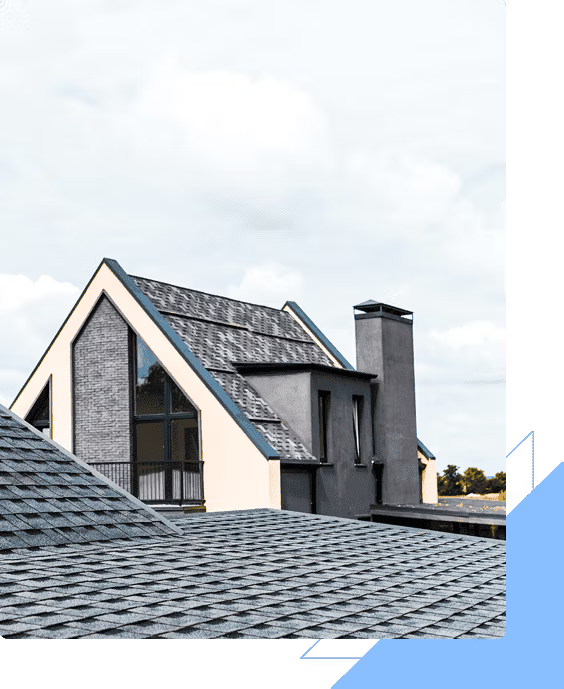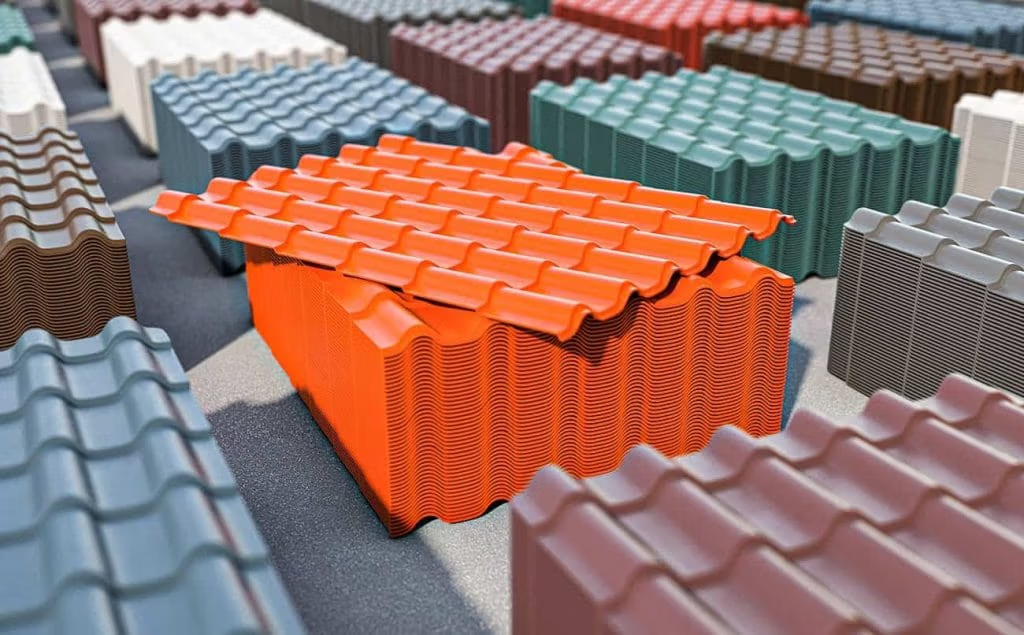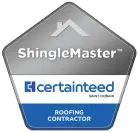Roofs are a fundamental and often overlooked component of any building, providing protection against the elements while also contributing to its overall aesthetic. When selecting a roof for residential or commercial properties, there are many different types available that vary in cost, installation difficulty, durability and style.
This article will explore five popular types of roofs and discuss how they compare with one another.
The first type of roof discussed will be asphalt shingles; these are among the most commonly used materials due to their affordability and ease of installation. Their popularity is largely attributed to the fact that they come in an array of colors and styles which can add character to a property’s exterior. Furthermore, asphalt shingles boast good insulation properties making them suitable for both cooler climates as well as warmer ones.
Asphalt Shingles
Asphalt shingles are the most commonly used roof type for both residential and commercial buildings in North America.
They come in a wide variety of colors, shapes, sizes, and textures that can enhance the aesthetic beauty of any structure while providing protection from all kinds of weather conditions.
When it comes to installation costs, asphalt shingles are very affordable compared to other types of roofs.
They require little maintenance and boast superior durability against harsh climates like high winds or heavy rains.
In terms of weather resistance, asphalt shingles provide better protection than wood shake or metal roofs because they have an adhesive sealant layer that helps keep water out and prevents damage due to extreme temperatures.
As such, asphalt shingles are one of the best options when considering cost-effectiveness and long-term reliability.
Additionally, their lightweight design makes them easy to install without needing additional support structures.

Metal Roofs
Metal roofs are a popular roofing option for both residential and commercial properties. Unlike asphalt shingle roofs, which have overlapping layers, metal roofs consist of large panels with tight seams that fit together, creating a waterproof barrier that is incredibly effective in protecting the space inside from precipitation and other elements.
Metal roofs are usually made from galvanized steel or aluminum but can also be composed of copper, zinc, or terne-coated stainless steel. One type of metal roofing is known as standing seam and it’s typically installed on homes and businesses alike. Standing seam features two large pieces of metal running vertically up the peak of the roof and joined at intervals by horizontal fasteners called ribs.
The advantage to this style of installation is its superior ability to shed water away from the structure as well as providing an exceptionally long life span when compared to other types of roofing materials. It’s also relatively cost-effective considering how durable it is — galvanized steel standing seam has been rated to last over 50 years if properly maintained!
Clay & Concrete Tiles
Clay and concrete tiles are some of the most popular roofing materials due to their durability and aesthetic appeal.
Clay tiles come in a variety of shapes, sizes, colors, textures, and finishes that can be used for both residential and commercial properties. They have been around for centuries, providing excellent insulation from heat and cold while resisting fire, water damage, and pests.
Concrete tiles also provide many benefits by allowing air movement through them which helps regulate interior temperatures. Additionally, they are more versatile than clay as they can be made into flat or curved shapes to fit any type of home or business space.
Both types of ceramic tiles offer long-term value with minimal maintenance so it is important to consider all factors when choosing between the two options.
When deciding on whether to use clay or concrete tiles for your roofing project there are many factors to take into consideration such as cost, longevity, weather conditions in the area, weight capacity needed for the structure, color preference, etc.
Ultimately if you want an aesthetically pleasing material with superior protection against fire and harsh weather conditions then clay is likely the best option but if you need something lightweight with flexibility then concrete may be the better choice.
Wood Shingles & Shakes
Wood shingles and shakes are a popular type of residential roof. They offer many advantages such as an elegant, rustic appearance that adds value to the home and superior insulation capabilities.
Wood is also highly malleable and can be applied in various sizes, shapes, tints, or textures for custom designs.
The main disadvantage with wood roofs is their requirement for regular maintenance. Without proper cedar preservation treatments regularly performed by experts, they’re prone to rot and insect damage which leads to costly repairs.
However, when properly treated and maintained, this type of roof can last 30 years or more with minimal problems.
Composite Shingles
Composite shingles have become an increasingly popular choice for both residential and commercial roofs. Offering enhanced durability ratings, composite shingles provide excellent protection against the elements while also being easy to install with relatively low installation costs.
The most common type of composite shingle is asphalt-based; they are typically composed of two or more layers of material that are bonded together. The top layer provides a watertight seal, while the lower layers serve as reinforcement and insulation. This combination ensures that the roof remains waterproof, windproof, and able to stand up to extreme temperatures and other weather conditions.
Additionally, composite shingles are available in a variety of colors to match any home’s exterior aesthetic design.
Rubber Roofs
Rubber roofs are a popular type of roofing material used in both residential and commercial applications.
This type of roof is made from a rubber membrane, usually synthetic or thermoplastic elastomeric (TPE), which is then coated with an acrylic-based sealant to provide additional protection against the elements.
The result is a highly durable yet lightweight roof that can last for up to 20 years if maintained properly.
The advantages of using rubber roofs are many, including superior weather resistance and ease of installation.
Rubber membranes also offer excellent insulation value and can reduce energy costs due to their thermal performance.
Additionally, they tend to be more affordable than other types of roofing materials such as asphalt shingles or metal panels.

In addition to being cost-effective and long-lasting, rubber roofs require minimal maintenance compared to other types of roofs; simply applying a coat of protective roof coating once every few years should suffice in keeping it looking good over time.
Solar Roofs
The demand for solar roofs has been steadily increasing, particularly in commercial and residential properties. Solar roofing is a cost-effective solution to energy production, with many businesses and homeowners increasingly opting for long-term solar leasing as an alternative to traditional rooftop systems.
With the advent of modern advances in technology, solar roofs have become more efficient than ever before. They can now be designed to include features such as integrated photovoltaic cells or even rooftop gardens that are both aesthetically pleasing and environmentally friendly. Additionally, they require minimal maintenance and upkeep, making them incredibly attractive investments.
Furthermore, some states offer tax credits and rebates when installing solar panels on rooftops. This makes these installations more affordable while providing significant savings over time due to reduced energy bills.
The environmental benefits of using renewable sources of energy are immense; not only does it reduce reliance on nonrenewable resources but also helps combat climate change by reducing emissions from burning fossil fuels. In short, switching to solar roofing provides numerous advantages which make it an appealing option for any property owner looking for ways to save money while helping the environment at the same time.
Conclusion
The roof of a residential or commercial property is an important factor in the overall look and feel of the building.
There are several popular types of roofs that can be used, each with their own advantages and disadvantages.
Asphalt shingles, metal roofs, clay & concrete tiles, wood shingles & shakes, composite shingles, rubber roofs, and solar roofs are all great options.
Each one offers different benefits that should be considered when making a choice on which type to use.
All styles have unique strengths and weaknesses that must be weighed before selecting the ideal option for your home or business.
By considering these factors carefully you can make an informed decision about what type of roof will best suit your needs.














